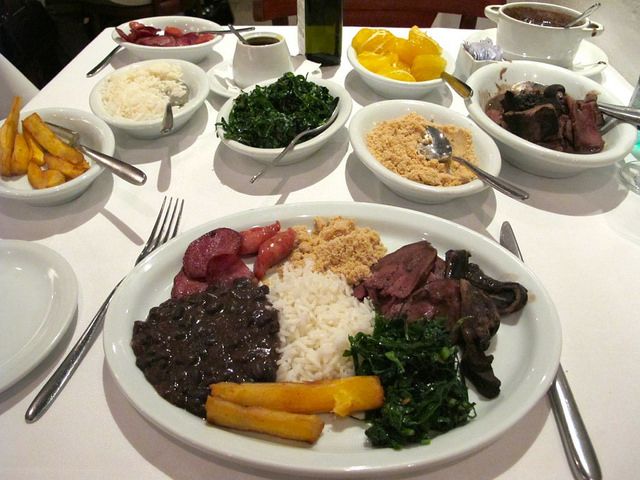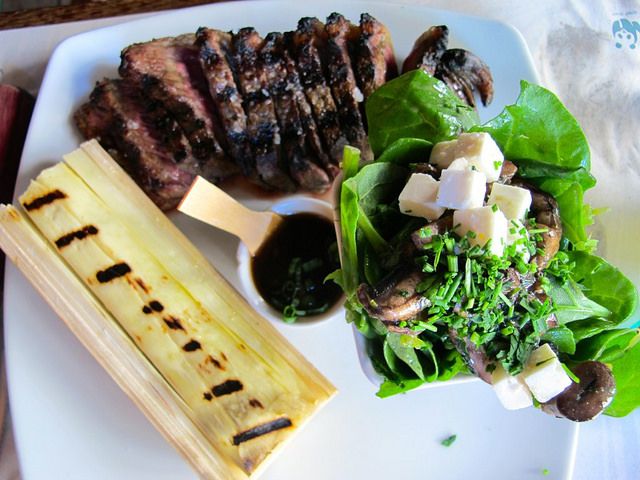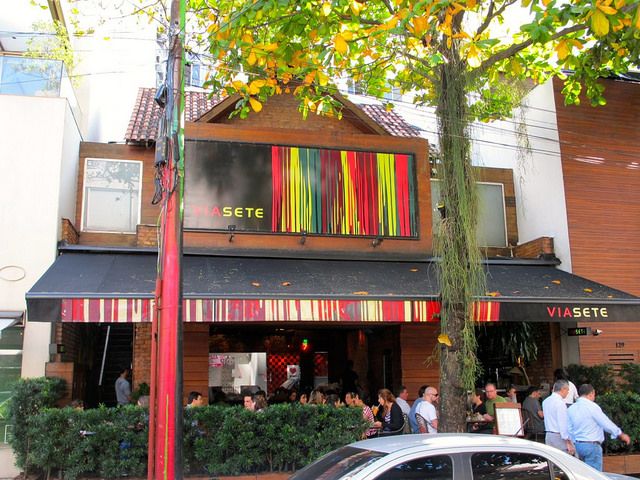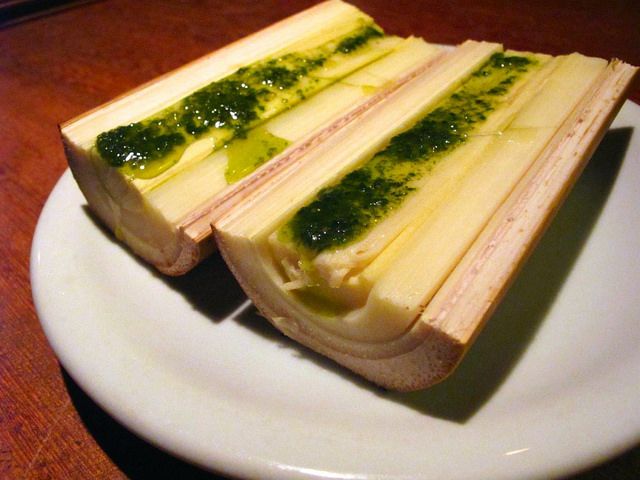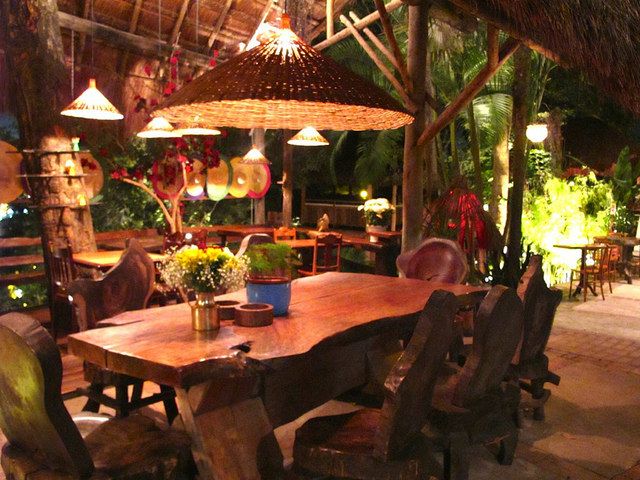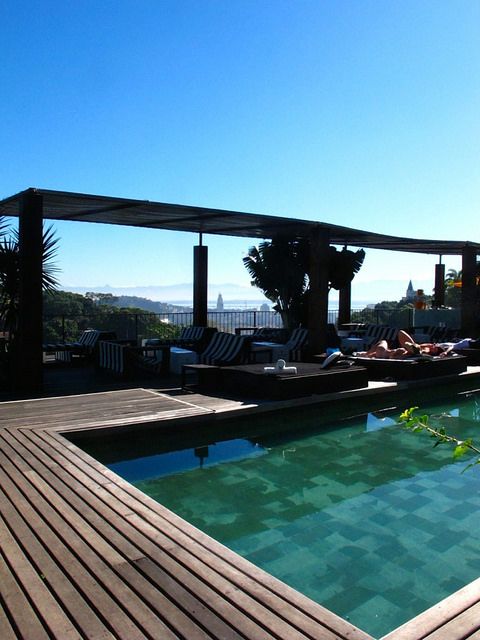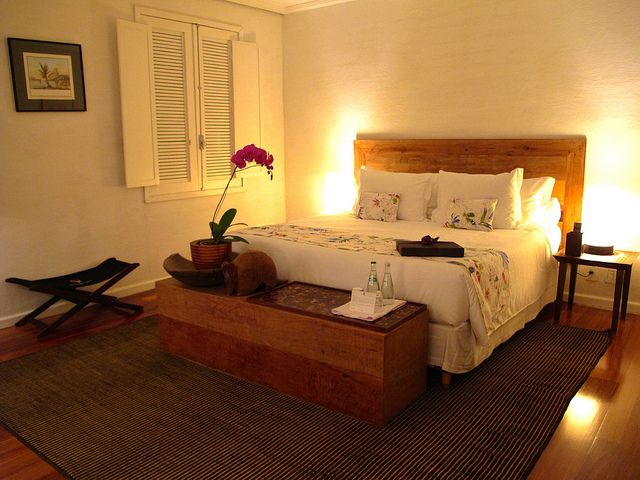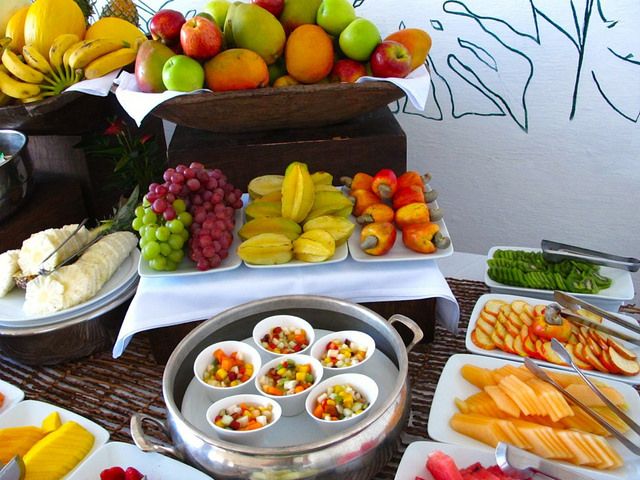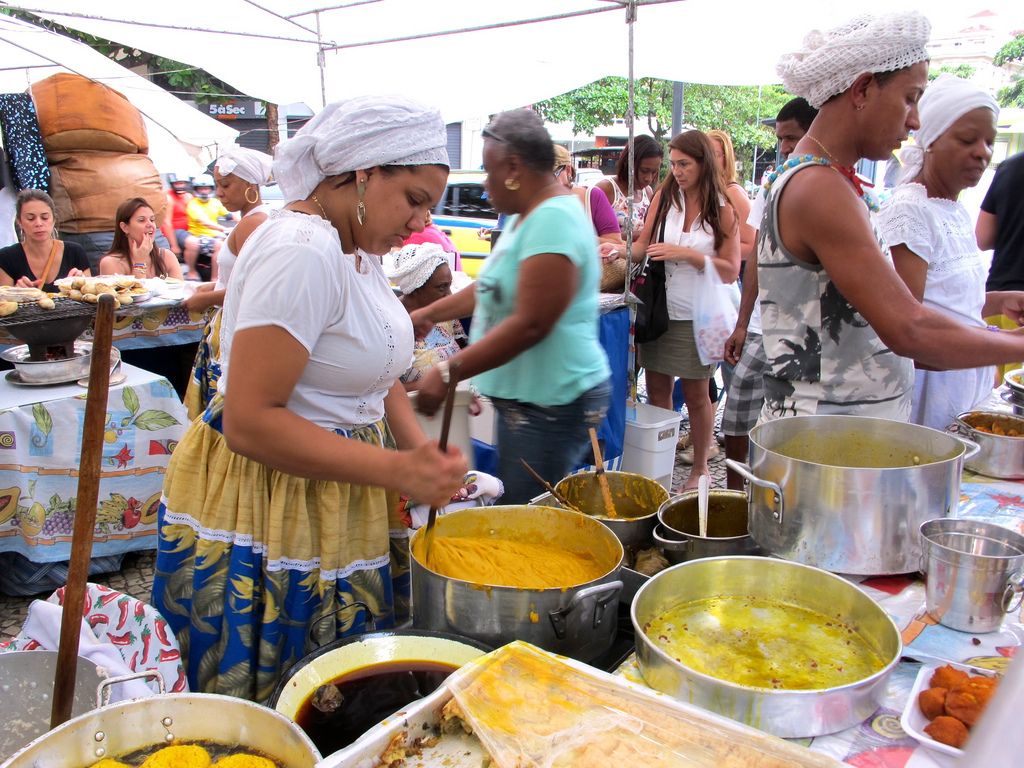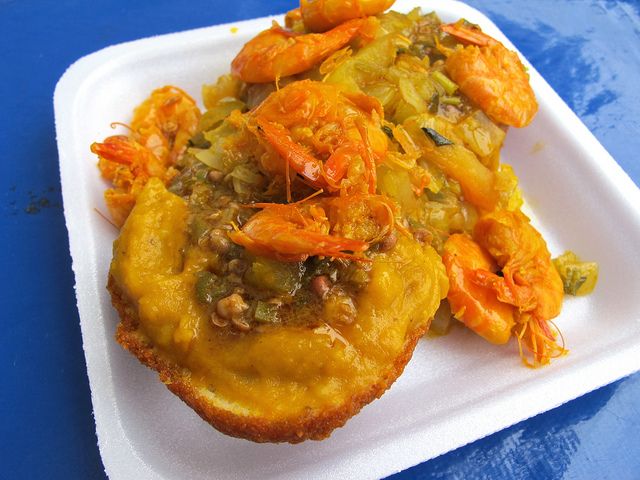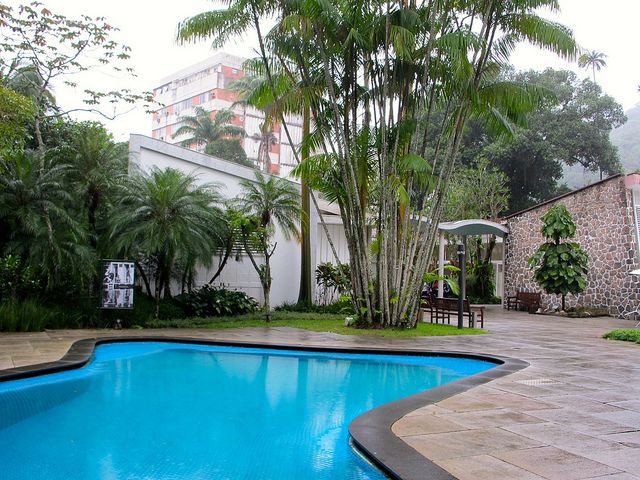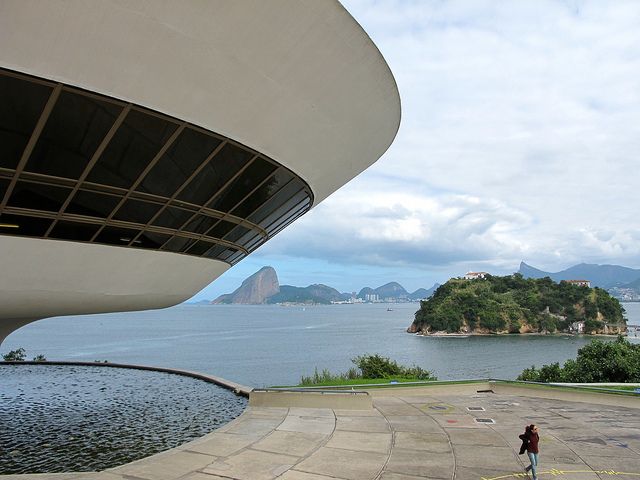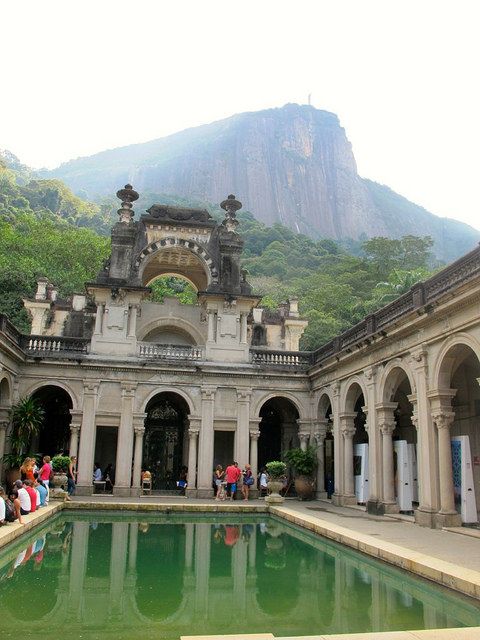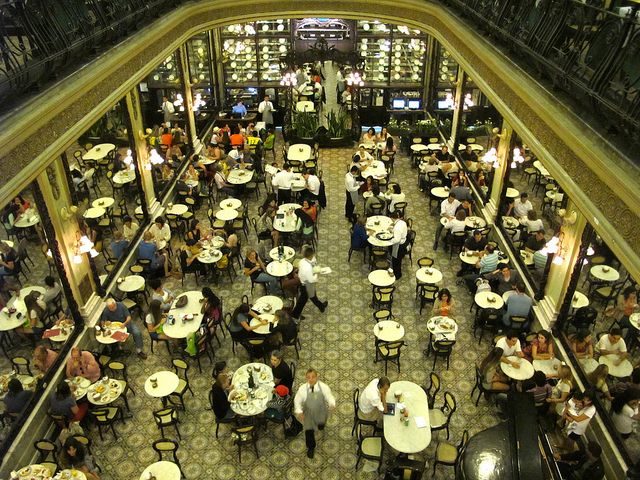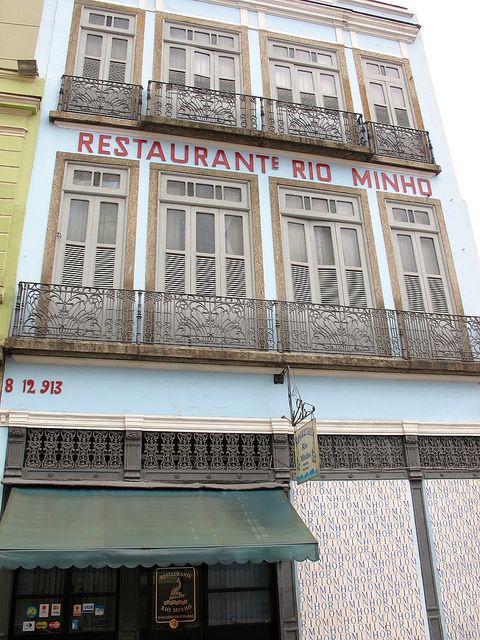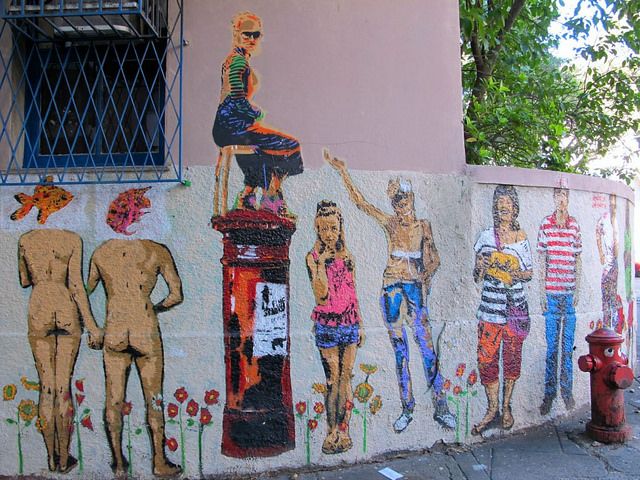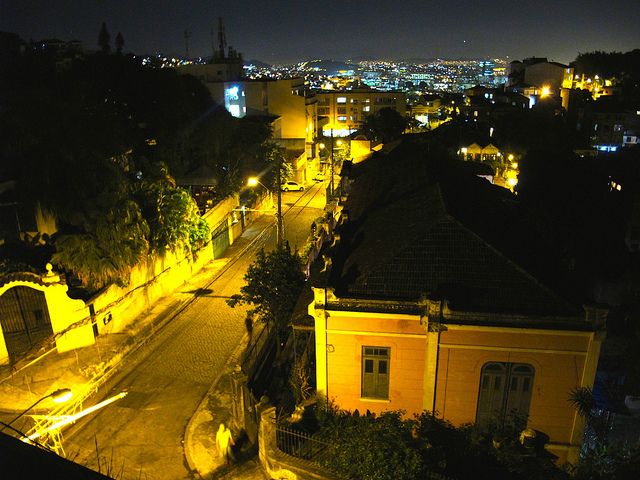Okay, so we covered the churrasco experience in my last Rio installment, but we still have quite a bit more Rio dining to cover. To be honest, Rio made me really lonely when it was time for dinner; in all my years of traveling solo, I have never felt so solitary at night. The city’s restaurants are not set up for solo diners—good luck finding anything resembling our city’s many counters, bars, and communal tables. One restaurant I went to had a bar, and no one was sitting at it—well, except me. Walking into a restaurant, every time, I’d have to explain “just one”—which at many places would elicit a raised eyebrow for a split second. Cariocas tend to dine out in big groups, or you’ll see lots of couples. Party of one, not so much.
Portions were another frustrating thing: so much of the food is portioned for people to share. I had to walk out of three restaurants (ugh!) when they wouldn’t be able to serve me less than a whole chicken, or an entire pot of moqueca. It would be too wasteful for me to order a huge feast just for myself. And not much fun.
But I was not going to miss indulging in the famed feijoada, which is traditionally served on Saturday afternoon (well, it depends on where you are—I heard other Brazilian cities have different nights). I found a classic place (58 years old and counting) called Garden in between Ipanema and Leblon, with an older and classier crowd. I love how late people eat in Rio. A table of eight, with a median age of 74, were just sitting down to eat at 10pm. I made a little promise to myself that I’m going to return to Rio to live when I’m older—I can start getting tan again and go to the beach every day, wear bright lipstick, and hang out with my friends and eat late. Sign me up.
My solicitous server poured me a huge glass of wine, so big I chuckled to myself (“Mama’s gettin’ heated tonight!”), although I can’t believe how many Cariocas drink Coke Zero with everything, no exaggeration. I was served slowly cooked and garlicky black beans, beef tongue, pig’s ear and tail (my server was very happy to see me eat this), thin slices and little chubs of linguiça, and thin air-dried meat, plus the classic accompaniments of shredded kale, aipim frito (fried yuca), farofa (toasted manioc flour, made from yuca), white rice, and orange supremes. My table was completely covered in bowls and plates. I was an army of one with that dinner. I gave it my best shot, but I needed at least two other people dining with me to make a proper dent.
So yeah, dinner in Rio was not very fun after the fourth night of going out. Although I will admit posting images to Instagram at least made me feel like I was dining with friends in a strange, techy, modern way. Twenty-nine likes for my feijoada pic. Yeah, was it good for you too?
One afternoon while I was doing a little shopping after my beach time, I checked out the cute Gilson Martins shop, where I found some of my favorite souvenirs to bring home (little coin purses with the wave pattern of the pavers of Ipanema, um, yes, I’ll take five). I befriended the way-too-adorable manager of the shop, who used to bartend in Miami, and after a little sassy banter we were fast friends.
Marcelo was a sweetheart and met me a couple of days later to take me to lunch to one of his favorite places in Ipanema, Via Sete. I was so excited to finally have someone to dine with, I know I was beaming. I can see why he’s a regular there: there’s a lovely outdoor terrace, a cute stylish crowd, and probably the best steak I had on the trip, their grilled picanha, Marcelo’s top dish. It was bonkers good. And guess who was thrilled to have grilled hearts of palm again on her last meal in Rio? This girl. Pro tip: go for their combination meal, it’s a good deal (you get two sides—they had really fresh salads). After your lunch, be sure to walk a few blocks over to Gilson Martins and say “Bom dia!” to Marcelo.
I’m also here to report that my party of one status didn’t stop me from having quite a romantic dinner by myself at one of the restaurants most renowned for its beautiful atmosphere in Rio: Aprazível. It’s like a tree house in the open air, perched up in the historic neighborhood in the hills of Santa Teresa; you’ll hear birds chirping over the soft backing track of bossa nova, adding to the sultry tropical vibe. The really, truly breathtaking view of the twinkling city made for some excellent company while I was surrounded by canoodling couples. Truth be told, I also had one of the nicest servers of the entire trip, Marcos, who got a big kick out of my curiosity about each dish, and provided plenty of friendly company.
You’ll notice the dishes are much more northeastern in style, hailing from Minas Gerais and Bahia. I loved their little half-moon pasteles of acarajé (filled with beef), the cheesy gratin of sweet potato puree with air-dried beef, and I was so thrilled to try the freshly grilled hearts of palm, still in the stalk! It was a first for me. It was simply drizzled with some pesto, which I actually scraped off—the taste of the fresh palmito was plenty to savor. The thick and bubbling pot of moquequinha made with dogfish was homey and rustic, and the cheese plate with cheeses from Minas Gerais—with preserved orange rind and fig and dulce de leche—was over the top, and made for quite a finale.
One of my favorite things about Aprazível is their love and dedication to Brazilian wine! Sommelier Paul Medder, a Kiwi, shared some insider stories of the small-production wines he poured, like Vilmar Bettú, a garagiste who is making wine from the peverella grape that was brought over by the Italians when they came to Brazil in 1875 and later, one of the few wineries to still grow it. I tried the 2011 malvasia, which had a bit of wildness to it, but balanced acidity, and became even more fragrant as it opened up. If you want to learn about Brazilian wine, Medder is a great champion. The restaurant even has their own wine (Era dos Ventos), cachaças (aged on premise), and pale ale they make in Niterói; they also have their own CDs—I totally had to buy one so I could re-create the bossa vibe back home. Although where is Marcos with my passion fruit caipirinha?
If you have a chance to spend a day wandering around Santa Teresa, do it. It has a bohemian and less-touristed vibe, with a bunch of cool galleries and cafés, although I was not going to walk around at night by myself (see, Mom, I told you I was careful!). You can easily take a cab to the neighborhood (it’s about a 15-minute drive from Ipanema) or a bus, and you’ll drive past some favelas along the way (you can tour some of Rio’s favelas—it’s a sensitive issue, but ultimately I think it’s important for people to see and understand, just make sure you choose a good tour operator).
You better be wearing some sturdy shoes in Santa Teresa; the cobblestones are tough to walk on. I was there a couple of weeks too early for the annual festival called Arte de Portas Abertas, when artists let people into their studios, and there are a bunch of parties (be sure to check Time Out Rio; it can happen from June-August). There are many unique places to eat and hang out, like Bar do Mineiro, Jasmim Manga Café, “Bar do Gomez”/Armazém São Thiago, Rústico, and Espírito Santa.
Who has two thumbs and is one lucky lady? This girl. I was so damn fortunate to get to stay a night in Santa Teresa at the stunning boutique hotel, the Hotel Santa Teresa, which was originally a coffee plantation that was converted into the oasis of your dreams. You won’t want to leave, which is kind of dangerous because you really should explore the neighborhood. The hotel has beautiful views everywhere: from its rooms, its restaurant, even at the sexy pool (pay a visit to the hotel Bar Dos Descasados, complete with lounging beds where you enjoy your view with your bubbly).
My luxe-rustic room was so peaceful, with a natural-modern look, and a peek out the windows was full of green tree leaves and fronds. It really feels more like you’re hanging out at your fabulously rich Carioca friend’s place in the hills. As if! A girl can dream. The abundant breakfast spread reminded me of some of the more special Turkish breakfasts I experienced, although this one was laden with a Rio rainbow of tropical fruits. Carmen Miranda would have approved. Wonderful hospitality, what a special place. I was sorry to leave the peaceful kingdom when it was time to check out, but my 24 hours there left me feeling so calm and happy.
So, I just realized I am saving the best for last here, the one dish that stood out over everything I ate in Brazil: acarajé! My sister thankfully told me to hunt this street food bite down—it’s actually an Afro-Brazilian dish from Bahia (by way of Nigeria), so you have to search for it a bit in Rio. But every Sunday in Ipanema is the Hippie Fair at the Praça General Osório, which is a street fair selling crafts and tchotchkes (where I did manage to find a beautiful leather bag tucked away in one of the stands). And that’s where you’ll find the Bahian barracas! You can’t miss them—the ladies running these pop-up stands have colorful skirts and their hair up in white scarves and eyelet turbans to match their tops. (I realized I saw another Bahian barraca in town later on—look for the ladies in traditional head scarves.)
Get in line, and order the acarajé, which is a black-eyed pea fritter fried in dendê (palm oil)—it gets slathered with vatapá, a thick, rich, and spicy sauce made from shrimp, coconut milk, bread, cashews (or peanuts), garlic, onion, and more dendê, and then it gets topped with baby fried shrimp. Be sure to request a few shakes of the hot sauce. No, it’s not light, but the deep, layered flavor and textures of this dish will haunt me until I return to Brazil again. It made me want to go to Bahia, stat. Do not miss this experience. You can huddle at the counter or share a rickety table with your fellow diners, it’s a fun scene. Other folks are there for the sweets and the tapioca crêpes made with coconut and condensed milk.
Here are a few sights to see as well. I was there during the winter so I had some rainy days inside, which means yay, museum days!
One of the coolest museums is the Instituto Moreira Salles in Gávea, with an awesome photography collection—I got to see three fantastically curated shows. It was a private residence, and is such a cool tropical-modern building, with gardens designed by Burle Marx. I was ready to move in.
On the day I walked around the Centro area, I spent a rainy afternoon in the Museu de Arte Moderna, which not only was showing some provocative art by Brazilian artists, but it also has beautiful landscaping by Burle Marx in the back.
There was no way I was going to miss seeing the Museu do Arte Contemporânea in Niterói, which looks like a UFO (it was designed by by Oscar Niemeyer). There were a few cool pieces inside, but it’s really the building that steals the show. You take a ferry over, it’s a fun daytime adventure.
The Jardim Botânico is lovely to visit during the week, talk about a lush and serene place (it’s also orchid central). And you have to visit the Parque Lage, with a former mansion (now a visual arts school) that has a dramatic view of Corcovado looming overhead (there’s a café where you can grab a coffee or brunch). There’s also the nearby La Bicyclette (a local fave) or Jojo if you want more to eat, and there’s Yumê for Japanese.
You really should take a stroll through the colonial Centro area, with plazas dating back to the early 1800s (they fill up with people at lunch and after work, like the bright yellow Amarelinho on the Praça Floriano), and you absolutely have to visit the breathtaking Confeitaria Colombo which dates back to 1894. This coffeehouse is the picture of grand, full of rosy marble, stained glass, ornate hand-carved wood, beautiful tiles, and a rather tasty pastel de nata. Just come here, relax, order a coffee or a cocktail (and candies to bring home), and soak the old world ambiance in—I have never seen anything like it. On a much smaller scale is the Casa Cavé, which I took shelter in during a rainstorm (it’s also historically charming, with tile floors). And if you want a bite, head to Casa Paladino (open since 1906!) for a classic, old-school lunch or snack.
Sights on my list for next time:
The Sítio Roberto Burle Marx, a huge estate of the amazing landscape architect.
Cristo Redentor: On a rare cloudless day, I opted to visit the stunning Pão de Açúcar instead of making the trek to Cristo, but I will definitely make my way to the top of Corcovado next time!
A few observations and tips:
Cariocas are some of the most friendly and warm people, and chivalry is alive and well. As a solo female traveler, I always felt so well taken care of.
Riding the buses is quite the adventure. I used Google maps for up-to-the-minute bus timetables on how to get somewhere, because there are so many buses you’ll never figure it out. If you want a bus to stop for you, you have to stick your arm out and wave like a crazy person to hail it, or it’ll never stop, even if you’re at a bus stop. It’s like the buses are in a mad race to somewhere, I don’t know. As soon as you get on, grab hold of something, because you’re about to experience torque like you have never felt it. The drivers will totally floor it, even if you’re an old lady with your groceries and you haven’t sat down yet, and totally lurch you around as they take a corner, and then slam on the brakes. It’s, uh, an adventure! There’s a cashier on board, so don’t worry about having exact fare.
ATMs can be a nightmare. You’ll see a lot of bank lobbies with ATMs, but sometimes they’ll be out of money, and most wouldn’t work with international banks. I learned the hard way that most of them don’t work after 10pm and on Sundays. (Gimme my money!) I had some success with Banco do Brasil, but plan on being frustrated most of the time—you start looking everywhere for those little Cirrus symbols.
Other frustrating things (i.e., you aren’t in California anymore): the amount of plastic used everywhere (like regular silverware wrapped in plastic and your napkin wrapped in plastic too), no comment on the flimsy napkins and toilet paper, and finding 3G on your phone is the picture of sporadic. Fortunately almost every business has Wi-Fi, and they’re usually generous with handing out the password.
Coffee was mostly depressing. They’ll dump chocolate syrup in your cappuccino if you don’t keep an eye out. There are some beautiful espresso machines run by people who don’t know what they’re doing, and the coffee itself was pretty grim. I found one cafe where the “barista” would let me gesture to her how I wanted her to make my espresso (my pantomime of a hard tamp was pretty hilarious—we both shared a good laugh). At least all the coffees come with a little treat on the side, which is a cute tradition. At the end of the trip, a Carioca told me Grão Espresso is pretty decent, and here’s a piece on cafés to try. Oh, and Guerin, a French boulangerie, is supposedly good for coffee.
Other restaurants that were recommended to me or on my list:
Chico & Alaide: an awesome boteco known for their bolinho de bacalhau (salted cod croquette).
Talho Capixaba: a bakery in Leblon that has good empadinhas, sandwiches, and more (supposedly a good spot for breakfast or before the beach).
Amir for Lebanese food.
Cocktails and seafood at the fancy Fasano.
Catch the sunset and have drinks with everyone on the little wall at Bar Urca.
A fantastic resource for places to eat is Culinary Backstreets (they also offer tours!).
To find out weekly clubs and DJ nights, and arty stuff, check out The Rio Times and Time Out Rio.
For pictures from the entire trip, you can check out my images of Rio here.
Boa viagem!
